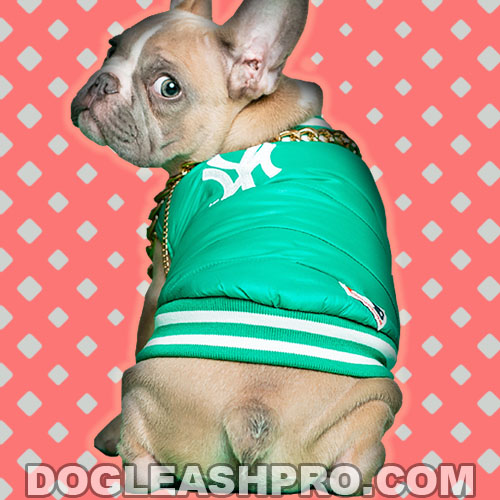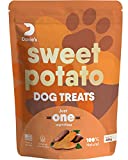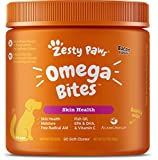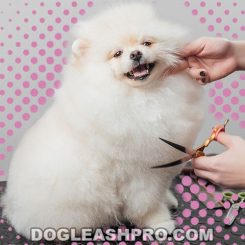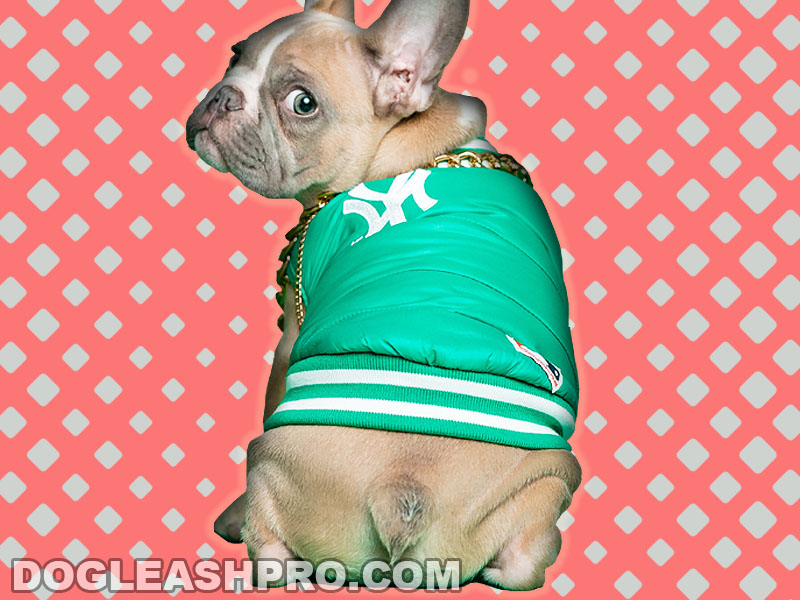
Whether you’re a first-time dog parent or have had dogs for many years, seeing your dog scooting or your puppy scooting on the floor many times a day can be quite concerning.
Before we go over the 10 effective and easy home remedies for dog scooting, let us first explain why your dog is scooting on the floor or why your dog rubs bum on grass. Some of these reasons may surprise you!
RECOMMENDED: My Dog Keeps Sitting On His Bum After Grooming: 10 Reasons Why!
Table of Contents
Why do dogs scoot their butts?

You just saw your dog scooting her butt on the floor again. You’re confused because it hasn’t even been an hour and your canine companion is dragging her butt again.
When dogs scoot, you can see them dragging their butt continually and it can get annoying. Depending on where your furry friends are currently at, this could be on the floor, carpet, ground, or grass.
Now you’re probably wondering, “why is my dog scooting?” or “Why does my dog drag her butt?”
Here’s why.
Dog butt scoot for the following reasons:
- Your canine friend’s anal glands (or sacs) are inflamed or clogged and need to be expressed.
- Your furry friends may have intestinal parasites which include roundworms, hookworms, ringworms, or tapeworms.
- There may be some poop or dirt on your dog’s bum.
- Your four-legged friends may be infested with fleas or ticks after coming back from a long hike or run.
- Your dog’s behind may have skin irritation.
- Your pooch may be having constipation.
- Food allergies.
So, how does scooting their butt on the floor or carpet help? Let’s discuss this next.
Why does my dog keep bum scooting?

Dogs scoot their bum on rough surfaces like your hardwood floor, carpet, or the ground outside because it provides temporary relief to the discomfort they’re feeling on their rear end.
The discomfort is usually caused by one of the reasons above, which we will discuss more in detail below.
Anal gland infection or Anal sac infection in dogs
Whether you have a female or a male dog, all dogs have anal glands. Our furry friends have two small anal sacs that are oval-shaped and are located on either side of the anus. If you’re trying to locate the anal sacs, they’re located at around the 4 o’clock and the 8 o’clock positions.
The anal sacs are surrounded by a wall that is lined with many sweat (sebaceous) glands, which make fluid that smells like fish. In addition, the anal sacs also store fluid and the fluid gets released through a small canal or duct. This canal opens just inside of the dog’s anus.
So, what is the purpose of the anal gland?
One of the main purposes of the anal gland is to help dogs mark their territory. When dogs secrete their anal sac fluid, they’re trying to let other dogs or animals know of their presence. The anal sac secretion actually contains chemicals or a distinctive odor, which other dogs and animals can smell and detect.
The anal sac fluid is usually squeezed out when your dogs poop. Consequently, your dog’s poop will have a distinctive odor. Our furry friends love to explore and smell the world around them. In this way, it’s no wonder why they love to smell another dog’s poop.
Related Article: Coprophagia In Dogs | Shockingly Simple Solutions & Treatments
There are times when the sacs can not excrete the fluid on their own because the ducts that allow the release of the fluid become inflamed. As a result, the sacs get clogged, plugged, or impacted.
If this is happening to your canine friends, don’t fret. Anal sac disease is actually quite common in dogs. When the fluid continues to stay inside the sacs, they start to thicken and it’s the perfect environment for bacteria to grow. Consequently, the anal sacs then start to become bloated and swollen.
As the anal sacs continue to fill up with thick fluid, they will become inflamed and filled with pus. This is known as an anal sac abscess.
All of this can lead to discomfort, pain, and even itchiness. When the anal glands become overly filled for quite a while, they can burst or become infected, which can lead to other serious health issues.
Additionally, it can be agonizing for your canine friends to poop.
Thus, if you find your dogs scooting their bottom across the floor several times a day for at least two or three days, then it may be that they are having anal sac-related problems. Some dogs may also lick their rear ends continuously throughout the day or chase their tail.
Dogs may be having constipation
When dogs are having a difficult time pooping, it can be painful and discomforting. In order to temporarily relieve some of that discomfort, they will scoot their butt across the floor.
If you notice your pups are not pooping during their daily walks and they start to scoot on the floor or carpet once they’re home, then it could be due to their diet. Sometimes a simple diet change or adjustment is enough to get your dog pooping again.
In our home remedies section below, we will discuss diet changes and adjustments in more detail. You can scroll to that section now or keep reading to find out other reasons that are causing your dogs to scoot their butt on your floor or carpet.
Poop or dirt on your dog’s bottom

On the other hand, if your pups are pooping and they’re scooting after pooping, then it could be that there are loose stools left on their behind. This usually occurs when your canine friends have loose or watery diarrhea.
Sometimes, the loose feces can get stuck on your dog’s behind or get stuck on the hair around your dog’s butt.
If your pooch has been playing in the backyard or at the dog park and accidentally sat in another dog’s poop or something dirty, it can also cause your dog’s rear end to become itchy and irritated.
You’ll want to check their rear end and see if there’s anything there. This could be dirt, poop, or any other type of debris.
If you have a dog with a long coat such as a long haired Chihuahua or a long haired Dachshund, then you’ll want to trim their hair to prevent dirt or poop from sticking onto the hair or near the rear end.
Intestinal parasite infection

Another reason you’re seeing your dog scooting after pooping or noticing that your dog has an itchy butt could be due to an intestinal parasite infection.
When dogs have intestinal parasite infections, it not only causes gastrointestinal-related issues in your furry friends, but it can be why your dog is scooting across the floor or carpet.
What’s dangerous about having an intestinal parasite infection is that it’s not something that pet owners can spot and identify right away.
Unlike the ability to spot a dried dead tick on dog, it’s only when your pups begin to experience gastrointestinal-related issues that pet owners start trying to figure out what the problem is.
And by that time, there may already be an infestation and it has become quite severe.
As mentioned above, the most common intestinal parasites include the following:
- Tapeworms.
- Roundworms.
- Whipworms.
- Coccidia.
- Hookworms.
- Giardia.
After your dog has done his business, you may see white specks in dog poop or worms moving around in their poop. It is also possible that the worms are moving around their butt area which is causing their rear end to itch.
The constant itchiness can cause discomfort and your canine friends want to relieve that discomfort and itch by dragging his bottom or sitting on his bum.
The life cycle for each type of worm varies. Also, adult roundworms can live in a host for up to 2 years while adult tapeworms can live for up to 30 years in a host.
Therefore, if you see your canine friends scooting their butt on your carpet or floor incessantly throughout the day and this is happening for more than a day or two, you may want to check their feces or butt area to see if there are worms.
If you do see parasites, we highly recommend that you contact your vet right away. Your vet will provide you with the best deworming treatment depending on what type of worms were found in your furry friends.
When my dogs had an intestinal parasite infection last year, our vet recommended this deworming treatment. It was effective and was able to remove the tapeworm in their bodies.
Allergies
Our canine companions can also become allergic to certain food or seasonal changes over time. For instance, some dogs can suddenly get wheat allergy or soy allergy after constant wheat or soy consumption.
Some allergies can also cause skin diseases in dogs such as yeast dermatitis or Malassezia dermatitis. When there’s abnormal yeast overgrowth on your dog’s skin, it can lead to skin inflammation or dermatitis.
When dogs have a yeast infection, it can cause itchy, dry, and flakey skin which can cause your dog to scoot his bottom.
If you notice your dog is scooting and suspect it may be due to some allergic reactions or allergies, contact your vet as soon as you can and inform the vet of your dog’s diet. There may be something he is eating that is causing allergic reactions and itchy, dry skin which is causing him to scoot.
Don’t miss: Can Dogs Eat Wheat Thins?
So, why do dogs scoot on the carpet?
As we can see, there are three (3) primary reasons why you see your dog scooting on carpet.
The first reason is due to intestinal parasites, specifically tapeworms. These worms are visible to the naked eye as some of them go out from the intestinal tract and can be seen wiggling under the tails of infected dogs.
These parasites can irritate the dogs’ bottom, giving them the urge to scratch and scoot their behinds on the carpet.
The second reason is dermatitis which causes itchiness, including in the butt area.
The third reason why you see your dog scooting on carpet is due to a problem in the anal gland, also referred to as the anal sac which we’ll take more on the next section.
And why is my dog scooting on the floor?
Just like most dog owners, you may be asking why my dog is dragging his bottom.
Anal gland problems can cause dog scratching butt on floor. Anal glands are located on the sides of the anus, just below the skin which may also lead to some diseases namely anal gland impactions, anal gland infections, formation of abscesses, and anal gland rupture.
The anal glands release a scented liquid during defecation but the problem begins when this liquid becomes too thick to come out naturally.
This could be caused by either diarrhea or constipation. As more scented liquid is produced and not expressed naturally, it can lead to anal gland irritations and disease.
Aside from a foul smell in the rear area, the common sign of anal gland disease is a dog scooting on the floor, a behavior dogs do to relieve itchiness and soreness in the anal area.
How can I treat my dog’s scooting at home?
Now that we’ve discussed the various reasons behind dogs scooting on the floor, carpet, and grass, we hope it has helped you identify the underlying cause so you know which home remedies to choose from.
Next, we will go over ten (10) easy Home Remedies for Dog Scooting. The different home remedies listed below will help alleviate your precious pup’s discomfort.
These home remedies for dog scooting are tailored to your pup’s specific issue. You can try them one at a time or or try all of them at once.
10 Easy Home Remedies For Dog Scooting

- Clean your dog’s bottom regularly.
- Anti-inflammatory treatments like witch hazel can provide some relief to your dog’s sore bottoms.
- 2a. Vaseline
- 2b. Neosporin
- Use your fingers to express your dog’s anal glands.
- Apply warm compresses to your dog’s inflamed anal glands.
- Keep track of your dog’s weight.
- Keep your dogs hydrated, add water to your dog’s kibble, and have them drink lots of water.
- Feed your dog a healthy and fibrous diet.
- Add probiotic-rich food to your dog’s diet, including probiotic supplements or treats.
- Fish oil can help reduce inflamed and swollen anal glands.
- Exercise, exercise, exercise!
Let’s go over these home remedies for dog scooting in more detail.
1. Clean your dog’s bottom on a regular basis
If you notice your dog scooting on floor or your dog scooting bottom on floor after pooping, the good news is it could simply be that your canine friend’s butt is dirty.
When there is dirt, mud, or feces stuck on the butt area and it’s been sitting there for more than an hour or two, it can cause itchiness and lead to discomfort in dogs.
Perhaps your canine friends were playing in the backyard and accidentally sat down on dog poop that wasn’t picked up or discarded from the day before.
Overnight, the doggy poop was infested with ticks and fleas and now in addition to the dog poop on your dog’s rear end, there may be a tick or two there as well that’s causing your dog’s butt to itch.
As a natural reaction, your furry friends will scoot their butt across your floor to alleviate this discomfort.
We highly recommend that you clean your furry friend’s rear end if you notice him scooting on the floor.
Many suggest using warm water and soap to wash your dog’s bottom, however, we recommend using a dog shampoo that not only cleanses and gets rid of fungal infections, heavy metals, and toxins, but also helps soften rough, dry, and flakey skin.
Choosing the right dog shampoo that leaves your dog feeling and smelling fresh with healthy and moisturized skin and coat is important. It will help to alleviate that itchy bottom and your dog will no longer need to scoot his butt across the floor.
For many busy dog owners, using a doggy wipe is a great alternative. Be sure to use a wipe that is geared for your dog’s skin, coat, and paws. A simple wipe down of your dog’s rear bottom can help to remove poop, dirt, and mud.
While wiping down your dog’s rear end or cleaning his bottom with a dog shampoo, be sure to check for any ticks, fleas, or other parasites that may have attached themselves to your dog’s bottom.
Parasites like ticks will attach themselves to your dog’s butt, face, neck, ears, and paws and will stay there for days as they feed on your canine friends. When they fall off, your dog may start to develop red, itchy, and inflamed skin that looks like red splotches or red dots.
If your dog has a long coat, you’ll want to trim the coat around the rear end area so it’s easier for you to spot any ticks or parasites. Parasites love to hide in dark warm places and your dog’s rear end with his long coat could be the ideal place.
If you do spot a worm, make sure to clean your dog’s bottom thoroughly. If you spot an engorged tick feeding near your dog’s bottom, you’ll want to carefully remove it.
Don’t yank it, use anti-tick spray, or apply ointments. Doing any of this could actually distress the tick and cause it to release disease-causing bacteria through its saliva.
Plus, if you attempt to yank it, the body of the tick may come off while its head may still be buried in your dog’s skin.
If you’re grossed out by the idea of using your own fingers (which we don’t recommend) to get rid of the tick or fleas, try using a pointy tweezer or a tick twister. You’ll want to put on a pair of latex gloves as well.
Handy Hint: For a step-by-step direction on what to do if you spot a tick on your dog and how to remove it, check out Engorged Tick Fell Off Dog: Here’s What To Do! where we explain what you’ll need to successfully remove the tick.
2. Anti-inflammatory treatments like witch hazel can provide some relief to your dog’s sore bottoms
When my Chihuahua started scooting last year, her rear end started becoming very red and inflamed. I could see that she had a sore bottom. I decided to contact my dog’s vet and she suggested using witch hazel.
Yes, you read that right! This witch hazel beauty product can temporarily relieve sore bottoms and skin irritation that’s caused by excessive dog scooting.
If you already have a bottle of unscented and alcohol-free witch hazel sitting in your medicine cabinet or on your makeup vanity table, go ahead and moisten a few cleansing pads or cotton balls with witch hazel.
You’ll then want to gently apply and wipe your dog’s sore bottom with the cleansing pad or cotton ball.
The anti-inflammatory property in witch hazel helps to relieve the itchiness, inflammation, and soreness in your dog’s rear end that’s caused by scooting so much.
There are plenty of witch hazel options on the market. So which one is the best for your furry friends? You’ll want to choose an unscented, natural, and alcohol-free witch hazel to help soothe and provide relief to your canine friend’s sore rear end.
Alcohol-free witch hazel is the best option because it doesn’t dry out or burn your furry friends’ sore bottom.
Be careful when using witch hazel that does contain alcohol. Witch hazels that contain alcohol can get rid of some of that natural oil in your dog’s skin and this can cause further dryness and irritated skin. Additionally, this type of witch hazel may have a bitter or acidic taste.
If we know our furry friends well, we know that they will try to lick their sore or wounded areas and if you apply witch hazel that contains alcohol or astringent, they may taste the bitterness.
2a. Vaseline
Applying Vaseline on a dog’s bottom has its pros and cons. Some say it could provide a temporary relief to the itchiness caused by an inflamed anal gland while others say that it could easily trap bacteria around the area causing further inflammation and infection.
While Vaseline is great for us humans to use to relieve dryness in our skin or lips, it may be a different story for our dogs.
Vaseline can ease inflammation but it has not been scientifically proven to do the same thing on a dog’s anal sacs. Before applying any treatments, it is best to seek your vet’s advice.
If your vet does approve the use of Vaseline, it is normally recommended that a small amount be applied for a temporary relief.
A cone or Elizabethan collar must also be placed around your dog’s neck to prevent them from licking the wound.
2b. Neosporin
Another option is to apply Neosporin ointment to your dog’s sore bottom. Neosporin is a triple-acting antibiotic that can kill the bacteria around the butt area and reduce its inflammation.
It should be used with caution though since some dogs might have an allergic reaction to the ointment. Therefore, it is recommended that you do a patch test first by applying a small amount of the ointment in another part of your dog’s skin to see if redness develops.
When applied, it is recommended that you place an Elizabethan collar to prevent your dog from licking it.
And, always consult your veterinarian before applying any ointment with antibiotics even if it is an over-the-counter medication.
Neosporin is just a temporary fix that can soothe the itchiness for a short period of time and only a small amount must be used.
Your vet may prescribe an oral antibiotic if the skin around the bum develops an abscess or infection.
3. Use your fingers to express your dog’s anal glands
For first-time dog owners, using your fingers to express your dog’s anal glands may sound scary, intimidating, and tricky. However, learning how to do so is very helpful especially when your dog’s anal glands become inflamed regularly.
So, how to help dog express glands naturally?
Below, we will go over how to express your dog’s anal glands at home so don’t fret! For now, it’s important to note that you should not express your dog’s anal glands regularly if he’s not scooting. That’s because doing so can actually cause infections and inflammation.
If you notice your dog is scooting every now and then due to inflammation or infection of the anal glands, then you can go ahead and express his anal glands yourself.
We highly recommend that you have your dog’s vet or a professional groomer do this for you and show you how it’s done if you’ve never done this before or don’t feel comfortable.
If you’re feeling brave and this is your first time expressing your dog’s anal gland, don’t worry. We have you covered!
In this next section, we’ll go over how to express dog anal glands at home.
How to express your dog’s anal glands at home
If you’ve never expressed your dog’s anal gland by yourself before or are uncertain about how to do so, we highly recommend that you contact a veterinary professional or a professional canine groomer.
Your vet or groomer will show you how to properly express your dog’s anal glands and answer any questions you may have.
Just a heads up, expressing your dog’s anal glands for the first time will neither be fun nor a pleasant experience. However, after you’ve done this a few times, it will not be so bad.
If you think you’re going to vomit or gag expressing your dog’s anal glands, it’s a good idea to ask one of your family members to do it.
Here’s what you’ll need to successfully express your dog’s anal glands:
- Witch hazel or Epsom salt.
- A sink or bathtub or an absorbent puppy training pad.
- A pair of gloves.
- Vaseline.
- Water.
- Paper towels.
First, it’s important that you wear gloves since you can expect the fluid to come out while expressing your dog’s anal gland. Also, the anal gland fluid can have an unpleasant smell.
Second, to avoid having to clean up any mess later, you can have your furry friend sit inside a bathtub or lay an absorbent puppy pee pad underneath your dog’s bum. If you don’t have any puppy pee pads, you can use some paper towels.
Third, with your left hand, you’ll want to lift up your furry friend’s tail. With your right steady hand, you’ll want to use your thumb and forefinger to lightly squeeze your pup’s anal sacs.
To find your dog’s anal glands, one of the anal glands should be located at the 4 o’clock position and the other anal gland should be located at the 8 o’clock position.
Depending on the size of your dog, his anal glands could be the size of a plum or the size of a pea.
After a few gentle squeezes, the anal sacs should deflate and you’ll know that you have fully expressed the sacs when you can barely feel them.
Lastly, you can clean your pup’s bottom with doggy wipes (shown above) to get rid of any residual fluid. Any leftover fluid can cause an itchy bottom if they’re not wiped clean.
Please keep in mind that if your dog is scooting on the grass, carpet, floor, or ground and he doesn’t have an anal gland problem, it’s best that you do not express his anal glands. That’s because expressing them for no reason can actually lead to anal gland sacculitis or inflammation.
4. Apply warm compresses to your dog’s inflamed anal glands
Applying warm compresses to your dog’s inflamed anal glands is perhaps one of the easiest and most natural home remedies for dogs with inflamed anal glands.
That’s because when you apply a warm compress to your dog’s bottom, it helps to relieve some of that inflammation.
So here’s what you’ll want to do:
- Get a bowl of warm water and add one tablespoon of Epsom salt.
- Mix the salt so that it dissolves into the warm water.
- Get a clean cloth and soak it in warm water.
- Gently wring the warm cloth so it’s not soaking wet. The warm cloth can be a little bit wet and moist.
- Apply the warm clean cloth to your dog’s bottom.
- Keep the clean warm cloth pressed up against your dog’s bottom and the inflamed anal glands for at least 4 to 5 minutes.
- You can repeat steps 3 to 6 as many times as necessary until the anal sac fluids start to drain on their own.
5. Keep track of your dog’s weight
Whether your canine friends are overnourished or malnourished, both can put your pups at risk for canine metabolic diseases.
When your furry friend’s anal glands become inflamed, it can actually affect their metabolic disease such that their underweight, overweight, or obesity issues can worsen.
This is why dog owners need to keep track of their K9 friends’ weight by being more aware of what they feed their pups.
When you’re preparing your pup’s food, you’ll want to know the ingredients in the food, what nutrients the food contains that will benefit your pups, and how much food is required per day.
Knowing the ingredients in the food is essential because some doggy food contains tons of salt which can not only lead to salt poisoning but also cause damage to their kidneys.
Most dog food you buy at the grocery store also contains tons of carbohydrate fillers which are harmful to your canine friend’s overall health.
This is why most doggy owners prefer to feed their four-legged friends’ homemade dog food. This way, they know the exact ingredients in the doggy food.
Homemade doggy food is also healthier and does not contain preservatives, artificial flavors, or fillers you often find in store-bought dog food.
But, if you’re busy and have to buy store-bought doggy food, make sure to stick to well-balanced, nutritious, and organic food. Organic doggy food is also easier on your puppies’ tummies since their tiny organs are still growing and developing.
6. Keep your dogs hydrated
No matter the season or the temperature, it’s crucial to keep your four-legged friends hydrated.
Staying hydrated and encouraging your pooch to drink lots of water is important, especially when you notice your dog scooting after pooping or your puppy dragging butt across the carpet or ground.
And here’s why.
- Your furry companion may feel constipated after eating dry kibble. This is especially true if you feed them dry kibble every day. When our pups feel constipated, they tend to scoot their bottom more often.
- Water is necessary to help drain their anal sacs naturally without straining.
Fortunately, there are a few ways to keep your K9 companions hydrated.
First, some pups may not be able to properly eat or digest dry kibbles. What you can do is add some warm water to their dry kibbles. This will help soften the dry kibbles.
Your furry friends will then be able to eat them without hurting their teeth and dry kibbles are also easier on their digestive system and stomach and help alleviate any constipation.
This is a useful tip if your K9 friends have gastrointestinal problems.
Second, you can add some fibrous food to their diet. This can be some brussel sprouts, gravy, or canned food. Fibrous food can also help with the constipation issue.
Third, check to make sure your dogs are drinking water throughout the day and after each of their meals. Some dogs generally do not like to drink water or aren’t feeling well and do not feel like drinking water.
Helpful Tips: If your precious pup is feeling sick or doesn’t want to drink water, there are other canine-friendly drinks that you can give your pooch. Check out What Can Dogs Drink Besides Water? for a list of six (6) healthy drinks that can also keep your dog hydrated.
In order to encourage your four-legged friends to drink more water, you can make it a fun activity to drink water.
Many dog owners, including myself, find it extremely helpful and convenient to have a self-serve water fountain for dogs. It’s true that dogs are fascinated with moving things, including flowing water.
Having a water fountain for dogs with a filtering system ensures that the water is clean and safe to drink. Your canine friends will also enjoy the taste of clean and fresh water.
Additionally, if you have a needleless syringe, you can also fill that with water or any dog-friendly drinks and feed it to your pooch.
7. Feed your dog a healthy and fibrous diet
As mentioned above, feeding your canine companion a nutritious and well-balanced diet that is also high in fiber can also help alleviate the dog scooting.
That’s because fibrous food or fiber supplements can help prevent constipation, which is one of the main causes for dog scooting. When dogs have constipation, they may feel uncomfortable. This can lead to your dog scooting bum on grass in order to alleviate some of that discomfort.
The good news is that our furry friends love a high fiber diet so they will happily consume their fibrous diet without any struggle.
A fibrous diet will lessen the constipation and make it easier for dogs to relieve themselves. And as mentioned above, the anal sac fluid is naturally squeezed out or emptied when your pup poops. As a result, your dog is less likely to scoot his bottom on the grass or on your carpet at home.
Additionally, feeding your pooch a diet that is high in fiber also helps prevent anal gland infections.
According to Anton C. Beynen, PhD his research paper on Diet and anal-sac impaction in dogs, stated that, “To promote anal-sac emptying and/or to prevent anal-duct blockage, a fiber-rich diet is often recommended.”
Ronald Jan Corbee also detailed in his research paper that “a high-fiber diet is also recommended for prevention of anal sac disease.”
It’s important to note that a high fiber doggy diet will help with anal gland problems in general.
You can go with dog food that contains fiber or dog supplement that can be mixed in with your pup’s current food.
For my two dogs, they love this Hill’s Science diet dry dog food because they enjoy the chicken and barley flavor.
You can also find dog treats that have flaxseed or chia seeds in them. Alternatively, many doggy owners will give their pooch a moderate amount of cooked butternut squash or potato to help regulate their digestive system and help in bowel movements.
Here is one of many high fiber dog treats you can give your four-legged friends.
8. Add probiotic-rich food to your dog’s diet, including probiotic supplements or treats
If your pooch is experiencing constipation or diarrhea, it may cause discomfort and worsen their scooting. For a healthy gut and digestive tract, try giving your four-legged friends a diet that is rich in probiotics.
This could be in the form of probiotic treats or supplements.
When our canine friends have a healthy gut or a healthy digestive tract, it helps to lower the chances of having inflamed anal glands.
As such, it is a good idea to offer your pooch some canine-friendly treats that are rich in probiotics such as sour cream, yogurt, yakult, or sauerkraut. However, it’s important to make sure that your K9 companions are not lactose intolerant or allergic to dairy products before feeding them yogurt.
When feeding your pooch human food that is rich in probiotics such as sour cream, yakult, or sauerkraut, make sure it is in moderation.
When my two pups were having gastrointestinal issues, we found this probiotic dog supplement to be extremely helpful:
Regardless, we highly recommend that you speak with your veterinarian and ask for the best probiotic options for your furry family members, especially if your pups are experiencing gastrointestinal issues.
9. Fish oil can help reduce inflamed and swollen anal glands
Another great home remedy for dog scooting is to give your pooch a little bit of fish oil. Fish oils are packed full of omega-3 fatty acids so they contain anti-inflammatory properties.
Consuming a bit of fish oil can help to reduce the inflammation of the anal glands. When the anal glands aren’t as swollen, your pooch should be able to naturally express his glands.
Some canine owners like myself will mix the fish oil into our dog’s wet food. This way, if your pooch doesn’t like the smell or taste of fish oil, they will not notice it since it is mixed in with their regular food.
If this doesn’t work, you can offer your four-legged friends the Zesty Paws Omega Bites which are delicious chewable supplement treats that are rich in Omega fatty acids with DHA and EPA, nutrients, and vitamins.
You can also apply some fish oil to your dog’s rear end. First, you’ll want to get a cotton ball or a cotton pad with a few drops of the fish oil. Then, gently pat it on the inflamed area of your dog’s rear end. You’ll want to do this several times over the next few days.
Within a week, the inflammation or swelling should lessen and your pup should be able to naturally express his anal glands.
10. Exercise, exercise, exercise!
Dogs that get their daily physical exercise tend to be healthier and happier. When our canine friends run, play, or move around, their joints, lungs, and heart health improves.
Not only that, but also our fur babies will have a stronger immune system and their bodies are able to combat diseases and infections such as anal sac disease in dogs.
According to VCA Animal Hospitals, anal sac disease is very common in dogs.
Thus, it is crucial that our furry family members are lean and trim. Being overweight can increase their chance of getting chronic anal gland inflammation.
When you take your pooch out for a long walk, a run, or for an adventurous hike, it helps stimulate his digestive system. This means that his digestive system is healthier and more efficient in digesting food.
At some point during your walk or run, he may go potty. When he does his business, the anal sac fluid will naturally be squeezed out or emptied.
Related Questions
How can I help my dog express his glands naturally?
First is through a warm and soothing compress which can be done every hour. Soak a soft cloth in warm water mixed with salt. Wring the cloth and then hold it against your dog’s anal area for about 5 minutes. This is done to bring down inflammation and for the glands to express the scented liquid naturally.
In addition to fiber and probiotics, encouraging your dog to drink more water (as discussed above) can help. Don’t forget that keeping your furry friends active promotes a healthy digestive system.
You can also express the anal glands of your K9 companion at home. Be sure to read up on the steps, ask your veterinarian, or watch tutorial videos so you will not end up exacerbating your dog’s condition.
What is a natural remedy for scooting?
Do you have witch hazel at home? Good, because witch hazel astringent is a natural plant extract known for its curative properties such as treatment for skin irritations and inflammations.
You can also offer your canine friends some pumpkin, which we’ll discuss in more details below.
What can I give my dog to stop scooting?
Diet modification is the best way to help your four-legged friends. Adding more fiber, probiotics and prebiotics into his diet promotes a healthy digestive system that prevents issues in bowel movements and anal gland infections.
How so?
Fiber assists in improving stool consistency, meaning, there is a better chance for the anal glands to release the scent liquid each time a dog does his business.
Some of the foods you can offer your dog to stop scooting includes cooked brown rice, plain pumpkin, oats, dry bran flakes, and broth that is high in fiber.
Psyllium is another great option that helps with dog scooting. That’s because it adds volume and enhances muscle activity within the digestive tract.
The good news is that you can easily make fiber broth (psyllium husk broth) at home. However, be sure not to overfeed your pup too much of it because doing so can lead to constipation.
Here’s a dog-friendly psyllium husk bone broth recipe that may help stop your dog’s scooting:
Ingredients:
- 1 cup of low-sodium bone broth (homemade or store-bought)
- 2 tablespoons of psyllium husk powder
- Optional: 1/4 cup of chopped fresh parsley or cilantro for added flavor and health benefits
Instructions:
- Pour the bone broth into a medium-sized saucepan and bring it to a simmer over medium heat.
- Gradually add and whisk in the psyllium husk powder, making sure to stir constantly to avoid clumping. The mixture should thicken slightly as the psyllium husk absorbs the liquid.
- If desired, add the chopped fresh parsley or cilantro for extra flavor and health benefits.
- Simmer the mixture for about 5 minutes, stirring occasionally to ensure even distribution of the psyllium husk.
- Remove the saucepan from heat and let it cool to room temperature. The bone broth mixture will continue to thicken as it cools.
- Once cooled, store the Psyllium Husk Bone Broth in an airtight container in the refrigerator.
- To serve, mix a small amount of the psyllium husk bone broth into your dog’s regular food. Start with a teaspoon for small dogs and up to a tablespoon for larger dogs, adjusting the amount as needed based on your dog’s size and the severity of their scooting issue.
If it’s time-consuming to make the psyllium husk bone broth, you can go with apples or pumpkin squash instead.
Next is to be up-to-date with your dog’s deworming schedule which is usually done every 3 months. Talk to a veterinarian about the appropriate deworming tablets and the quantity based on your dog’s weight.
DON’T MISS: How To Cure Parvo Without A Vet For Your Dogs
Does pumpkin help dog scooting?
Pumpkin for dog scooting remedy is recommended because this yellow vegetable is a good source of soluble and insoluble fiber. This helps in softening stool to prevent anal gland discomfort due to constipation or diarrhea.
When feeding your precious pup pumpkin, we recommend going with canned, plain, and pure pumpkin. Avoid giving your K9 friends pumpkin pie filling because that is packed full of sugar.
Pumpkin is a natural way to add fiber to your pup’s diet and makes anal gland expression easier. This in return decreases your dog’s scooting.
CHECK OUT: Can Dogs Eat Butternut Squash?
Food to help dog express glands
High-fiber food groups are the best for dogs with anal gland problems. Next to pumpkins, good examples are the following:
- Bananas.
- Carrots.
- Sweet potatoes.
- Oatmeal.
READ ALSO: Can Dogs Eat Mashed Potatoes?
DISCLAIMER: THIS WEBSITE DOES NOT PROVIDE MEDICAL ADVICE
The information, including but not limited to, text, graphics, images and other material contained on this website are for informational purposes only. No material on this site is intended to be a substitute for professional veterinary advice, diagnosis, or treatment. Always seek the advice of your veterinarian or other qualified health care provider with any questions you may have regarding a medical condition.
Resources:
https://hospital.vetmed.wsu.edu/2021/12/03/anal-sac-disease/

With over five years of specialized experience as an animal writer, my expertise lies in dog nutrition, health, behavior, grooming, and training. I am dedicated to delivering helpful and informative content that caters to the well-being of our furry friends. My primary goal is to empower pet owners with knowledge and ensure our canine companions thrive in health and happiness. In my free time, I love volunteering at local dog rescue centers.
